Sistertours.com ! WeChat/WhatsApp: +8613811531028
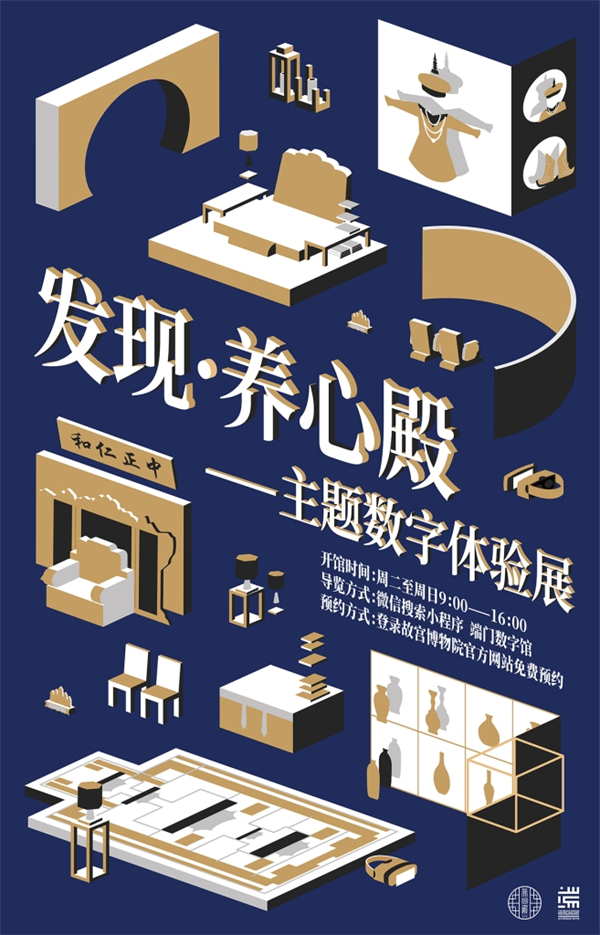
A new exhibition entitled "Discovering the Hall of Mental Cultivation: A Digital Experience" is now open to the public. The feature allows visitors new ways to explore the history of the Forbidden City and commemorates the ninety-second anniversary of the establishment of the Palace Museum, established on October 10, 1925. Adding to the Museum's innovative displays, this exhibition merges traditional Chinese culture and contemporary technologies.
From December 2015, the Hall of Mental Cultivation (Yangxin dian), which witnessed the life and rule of eight Qing-dynasty (1644–1911) emperors, has been closed temporarily for groundbreaking research and conservation. The palatial courtyard with its period installations is one of the most popular areas among the Forbidden City's original architecture. Dr. Shan Jixiang, director of the Palace Museum, explained to the press the conception and rationale behind the exhibition. "We show real artwork in travelling exhibitions so that visitors from other parts of the country can 'enter' into the hall. Meanwhile, digital technologies animate the area, bringing more young people and drawing them into this office-residential complex and into the traditional Chinese culture it embodies." This new exhibit includes an innovative reproduction of the Hall of Mental Cultivation for the Museum's visitors to "enter" the venue, experience it, and discover its secrets. Through this kind of digital and traveling exhibitions, the Palace Museum is able to take artwork to other galleries within and outside the Museum.
The Digital Gallery at the Gate of Correct Deportment (Duan men) opened in 2015. It is the first fully digital gallery space to integrate heritage architecture, traditional culture, and cutting-edge technology. The previous exhibition entitled "The Palace is a Museum" introduced visitors to the history, collections, and cultural connotations of the Palace Museum through digital representations of art and architecture. After over a year's preparation, this new exhibition featuring the Hall of Mental Cultivation now leads visitors into a virtual hall through a large-scale immersive virtual reality (VR) theater, VIVE headgears, Kinect motion sensors, and interactive touchscreens. These cutting edge technologies also involve artificial intelligence (AI) and voice and image recognition that enable visitors to converse with court ministers, appreciate artifacts in 360 degrees, and roam about the emperor's residence.

Bringing Museum Art and Historical Archives to Life through Experiential Technology
The Palace Museum is currently promoting a diverse, open Museum experience through experiential and interactive gallery displays. These innovative features constitute the dynamic core of the new "Discovering the Hall of Mental Cultivation: A Digital Experience" exhibition and an attractive element of fully digital galleries that break from the traditional static displays of typical museums. One exciting, new feature that augments visitors' reality and encourages discovery is a WeChat mini-program that turns their hand-held devices into a portable part of the digital-gallery experience. Accessible without the need for download, the program is called Digital Gallery@Gate of Correct Deportment (Duan men shuzi guan) and allows visitors to participate in the historical imperial administration, cultural activities, and residential life of the Hall of Mental Cultivation. The new digital exhibition features various digital activities and games such as having an Audience with a Minister, reading Official Communications, exploring the Hall of the Three Rarities, conducting Art Authentication, preparing Imperial Cuisine, and modeling Imperial Attire. Each game ends with an exciting conclusion and a display of the player's results. By "living through" an action-packed day in the Hall of Mental Cultivation, visitors gain valuable historical understandings through participatory features and impressive technology.
Bringing Cultural Heritage to Life with Virtual Reality and Artificial Intelligence
Since the year 2000, the Palace Museum has been exploring various applications of digital and virtual-reality technology. As a result, the Museum now has a large database of digital, three-dimensional models of the Museum's architecture and art. Curators and researches have been able to combine these high-resolution models with interactive technology in order to share the culture and history of the Forbidden City and the magnificence of bygone imperial glory. These technologies also enable visitors to experience the Hall of Mental Cultivation during its closure for research and conservation. In addition to architecture, the gallery also features digital renderings of a variety of ceramics, glassware, gold and silver articles, jades, bronzes, sculpture, and other types of art. Through the interactive displays, visitors are able to learn about the creation, design, and use of the artwork in a fun and exciting way.
The displays also utilize voice and image recognition software. In one of the AI features, visitors can chat with one of the emperor's old ministers. After telling him, "I've gained weight" ("Wo zuijin pang le"), the old minister replies, "If a superior man is not 'heavy', no one will respect him." ("Junzi bu zhong ze bu wei", a quotation from the teachings of Confucius, with zhong meaning 'serious' or 'severe' in classical Chinese). The humorous encounters with the old minister are one of the lively features of this gallery.
If visitors are not satisfied with viewing art in the collection of the Digital Cabinet of Curiosities (Duobao ge), they are welcome to "take" some of the articles off the shelves and add them to their home collection. Users can also "take" pieces off the cabinet shelves and place them inside the digital Hall of the Three Rarities (Sanxi tang) for appreciation. Or they can add them to their own digital collections on their mobile devices. These bonuses make for a complete interactive experience at the Digital Gallery of the Gate of Correct Deportment.
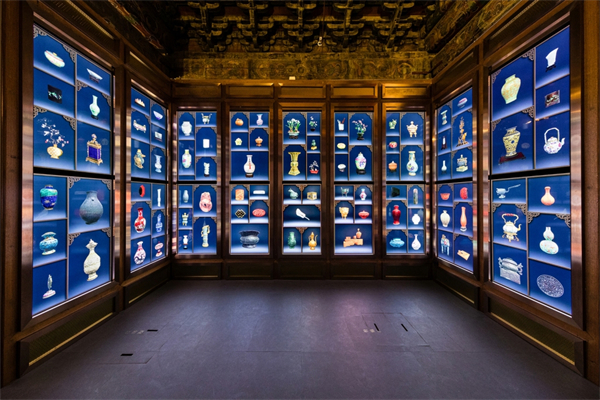
Bringing Traditional Cultural DNA to Life with Open-Access Museum Programs
Another driving principle of the Digital Palace Museum community is to invigorate traditional cultural "DNA" with cutting edge technology. The current initiatives of the Digital Gallery also uphold the innovative concept of Internet Plus (Hulianwang jia) by connecting the Museum's offline and online content and building its own O2O (Online to Offline) system. As a major part of the Museum's online offerings, its official Weibo and WeChat social media accounts serve as key platforms and have been used to promote the digital Hall of Mental Cultivation exhibitions through images, video, and other media. Meanwhile, offline galleries and exhibitions like the new "Discovering the Hall of Mental Cultivation: A Digital Experience" at the Digital Gallery at the Gate of Correct Deportment (Duan men) provide a space in which visitors can have a hands-on experience and interact with digital displays to explore the history and art of imperial China.
This gallery is located north of the Tiananmen Gate (Gate of Heavenly Peace, Tianan men) and south of the Meridian Gate (Wu men).
Exhibition Dates: 11 October 2017 – 26 November 2017
Reservations to visit the Digital Gallery can be made free of charge through the Museum’s official online booking system at https://gugong.ktmtech.cn (Chinese only).
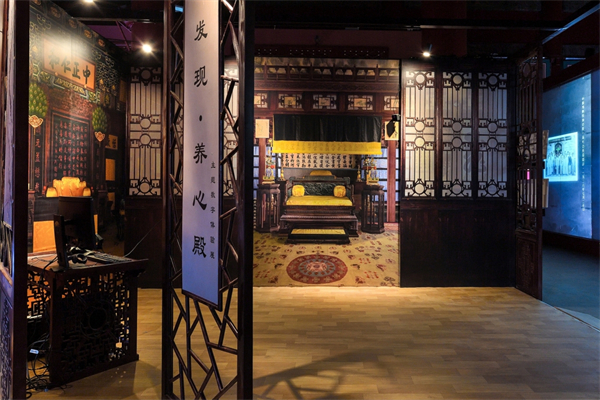
Exhibition Introduction: "Discovering the Hall of Mental Cultivation: A Digital Experience"
"Discovering the Hall of Mental Cultivation: A Digital Experience" uses a mini-program (Chinese only) on the social platform WeChat (Weixin) called The Digital Gallery@Gate of Correct Deportment (Duan men shuzi guan) to allow for self-guided tours of the exhibition. As visitors progress through the gallery and digital program, they receive points after each section. The program ends with an exciting conclusion in which the visitor is assigned the identity of a certain character based on their accrued points.
The gallery's WeChat mini-program also includes information about the exhibition layout, introductions to the main displays, instructions for using the interfaces, and recommended reading. After visiting the gallery, visitors are encouraged to complete an online survey that will be used to inform the Museum on how to improve the design of future digital exhibitions.
This exhibition is divided into four main sections, or zones, namely the Introductory, Interactive, Theatrical, and Experiential Zones. Each zone uses a variety of technologies and presentation formats to create a vivid experience of the bygone imperial administration, cultural heritage, and daily life of the Hall of Mental Cultivation.
Introductory Zone
The Introductory Zone features a large area of digital flooring and a massive screen showing video introductions of the history, structure, and functions of the Hall of Mental Cultivation. Originally constructed during the Jiajing reign (1522–1566) of the Ming dynasty (1368–1644), the Hall of Mental Cultivation (Yangxin dian) is located to the west of the Inner Court's Palace of Heavenly Purity (Qianqing gong). Beginning in the reign of the Yongzheng Emperor (r. 1723–1735), the courtyard became a residence for the emperor and the place from which he managed imperial affairs and rested from those engagements. After its establishment, the Palace Museum conducted restorations of the site and opened it to the public. Recent developments in digital documentation have allowed for this new exhibition and ever-more innovative ways to explore the historic hall.
Interactive Zone

1. An Audience with a Minister
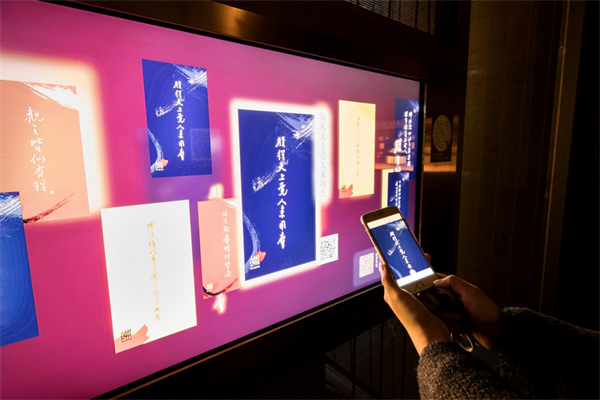

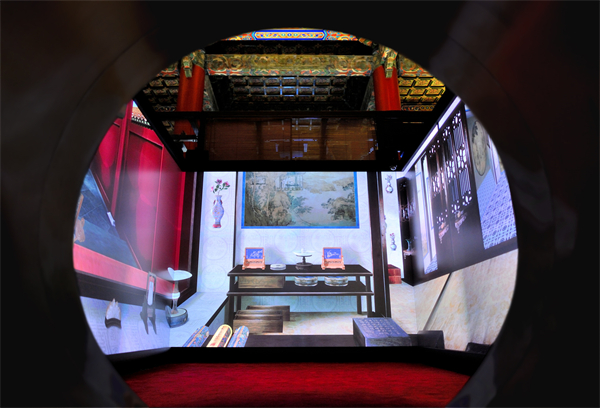
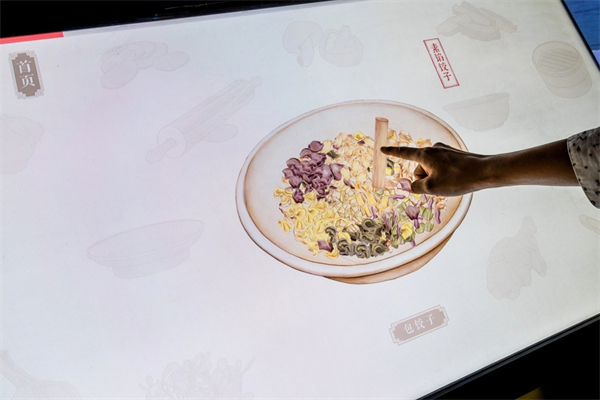


Theatrical Zone

The Experiential Zone allows visitors to wear VIVE headgear and explore the Hall of Mental Cultivation where the emperor lived and worked. By responding to official communications or strolling about the emperor's bedroom, visitors can have an immersive experience of imperial life. Users will chose from either the front hall of the Hall of Mental Cultivation or the rear hall with the bedroom. After making a selection, users can then freely explore the area.
The Hall of Mental Cultivation (Yangxin dian) was built in 1536 (the sixteenth year of the Jiajing reign, 1522–1566) during the Ming dynasty (1368–1644).
In 1722 (the sixty-first year of the Kangxi reign, 1662–1722) during the Qing dynansty (1644–1911), the Yongzheng Emperor (r. 1723–1735) began to use this courtyard as his residence.
During the reign of the Qianlong Emperor (r. 1736–1795), the Hall of the Three Rarities (Sanxi tang) was built and then used to house the masterpieces Timely Clearing after Snowfall (Kuaixue shiqing tie), Mid-Autumn Manuscript (Zhongqiu tie), and Letter to Boyuan (Boyuan tie); that emperor also constructed a mezzanine (xian lou) in the hall as a haven in which to practice Tibetan Buddhism.
In 1799 (the fourth year of the Jiaqing reign, 1796–1820), the Qianlong Emperor passed away within the walls of this hall.
In 1861 (the eleventh year of the Xianfeng reign, 1851–1861), the five-year old Zaichun was installed as emperor, and the Empresses Dowager Cixi and Cian began their reign from behind the curtain.
On February 12, 1912, it was here that the last emperor, Puyi (Xuantong reign, 1909–1911), declared his abdication.